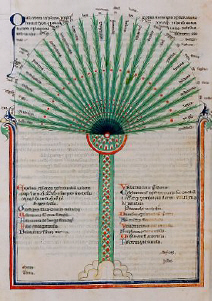7. But Matter, it may be contended, is the source of existence to the Sensible things implanted in it. From what source, then, we retort, does Matter itself derive existence and being?
That Matter is not a Primary we have established elsewhere. If it be urged that other things can have no subsistence without being implanted in Matter, we admit the claim for Sensible things. But though Matter be prior to these, it is not thereby precluded from being posterior to many things-posterior, in fact, to all the beings of the Intellectual sphere. Its existence is but a pale reflection, and less complete than that of the things implanted in it. These are Reason-Principles and more directly derived from Being: Matter has of itself no Reason-Principle whatever; it is but a shadow of a Principle, a vain attempt to achieve a Principle.
But, our critic may pursue, Matter gives existence to the things implanted in it, just as Socrates gives existence to the whiteness implanted in himself? We reply that the higher being gives existence to the lower, the lower to the higher never.
But once concede that Form is higher in the scale of Being than Matter, and Matter can no longer be regarded as a common ground of both, nor Substance as a genus embracing Matter, Form and the Couplement. True, these will have many common properties, to which we have already referred, but their being (or existence) will nonetheless be different. When a higher being comes into contact with a lower, the lower, though first in the natural order, is yet posterior in the scale of Reality: consequently, if Being does not belong in equal degrees to Matter, to Form and to the Couplement, Substance can no longer be common to all three in the sense of being their genus: to their posteriors it will bear a still different relation, serving them as a common base by being bound up with all alike. Substance, thus, resembles life, dim here, clearer there, or portraits of which one is an outline, another more minutely worked. By measuring Being by its dim manifestation and neglecting a fuller revelation elsewhere, we may come to regard this dim existence as a common ground.
But this procedure is scarcely permissible. Every being is a distinct whole. The dim manifestation is in no sense a common ground, just as there is no common ground in the vegetal, the sensory and the intellectual forms of life.
We conclude that the term “Being” must have different connotations as applied to Matter, to Form and to both conjointly, in spite of the single source pouring into the different streams.
Take a second derived from a first and a third from the second: it is not merely that the one will rank higher and its successor be poorer and of lower worth; there is also the consideration that, even deriving from the same source, one thing, subjected in a certain degree to fire, will give us an earthen jar, while another, taking less of the heat, does not produce the jar.
Perhaps we cannot even maintain that Matter and Form are derived from a single source; they are clearly in some sense different.
